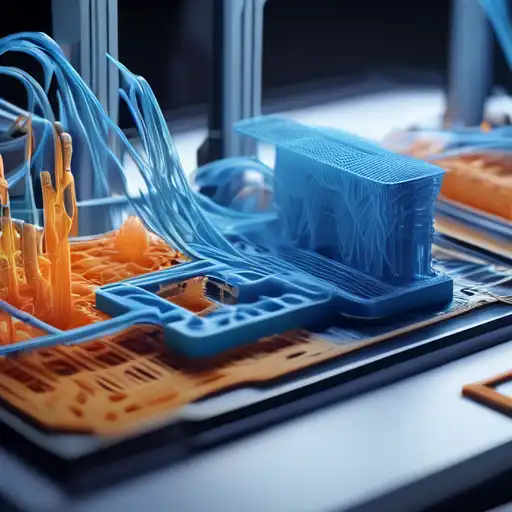The Revolutionary World of 3D Printing
3D printing, also known as additive manufacturing, is a process of creating three-dimensional objects from a digital file. This technology has been around since the 1980s but has gained significant momentum in recent years due to its versatility and efficiency. From prototyping to production, 3D printing is revolutionizing industries by enabling the creation of complex geometries that were previously impossible or too costly to produce.
How Does 3D Printing Work?
The process begins with a digital 3D model, which is sliced into thin layers by specialized software. The 3D printer then builds the object layer by layer, using materials such as plastics, metals, or even concrete. This method allows for high precision and customization, making it ideal for a wide range of applications.
Applications of 3D Printing
3D printing is transforming various sectors, including healthcare, where it's used to create prosthetics and implants tailored to individual patients. In the automotive and aerospace industries, companies are using 3D printing to produce lightweight parts that reduce fuel consumption. The construction sector is also exploring 3D printing for building homes more efficiently and sustainably.
The Future of 3D Printing
As technology advances, the potential for 3D printing continues to expand. Researchers are experimenting with new materials and techniques, such as bioprinting, which could one day allow for the printing of human organs. The democratization of 3D printing technology is also empowering small businesses and hobbyists, fostering innovation and creativity.
Challenges and Considerations
Despite its many benefits, 3D printing faces challenges, including intellectual property concerns, material limitations, and the need for skilled operators. However, as the technology matures, these issues are being addressed, paving the way for broader adoption.
3D printing is not just a tool for manufacturing; it's a catalyst for change, enabling us to rethink how we design, produce, and distribute goods. By building objects layer by layer, we're not just creating products—we're creating the future.
For more insights into how technology is shaping our world, check out our articles on innovation and manufacturing.
